What’s Your TRI-TIP Steak IQ?
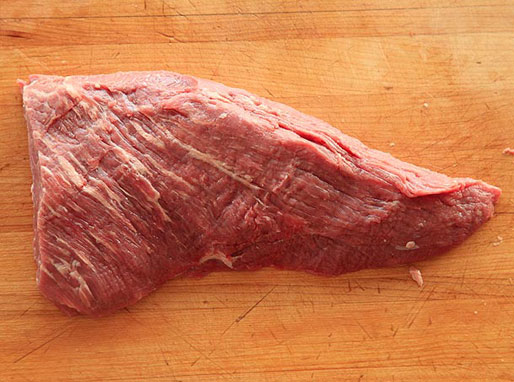
Pot roast and hamburger…that’s the extent, really, of my beef expertise. So when friends were talking about the wonders of TRI-TIP steak, I marveled (and was a little embarrassed at my ignorance). In case you, too, don’t know a whole lot about tri-tip steak, here’s the low-down in a nutshell.
First of all, though, let’s look at beef in general (and I thank Jan Muller and Bob Warden and their great book, The Ultimate Bulk Buying Cookbook, for this very helpful information):
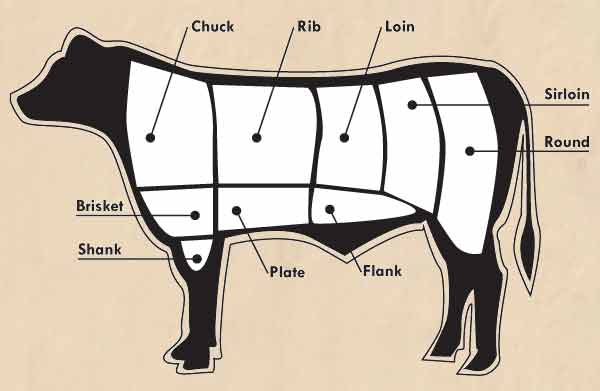
After a cow is slaughtered, it’s cut into four pieces, or quarters, for easy handling. The best, or ‘primal,’ cuts of beef are the chuck, brisket, shank, rib, short plate, short loin, sirloin, flank, and round.
The tri-tip is cut from the bottom sirloin primal cut. It has a pronounced grain that runs in a curve through its length. When slicing, you will want to follow the grain as it changes, and always cut against the grain for tenderness.
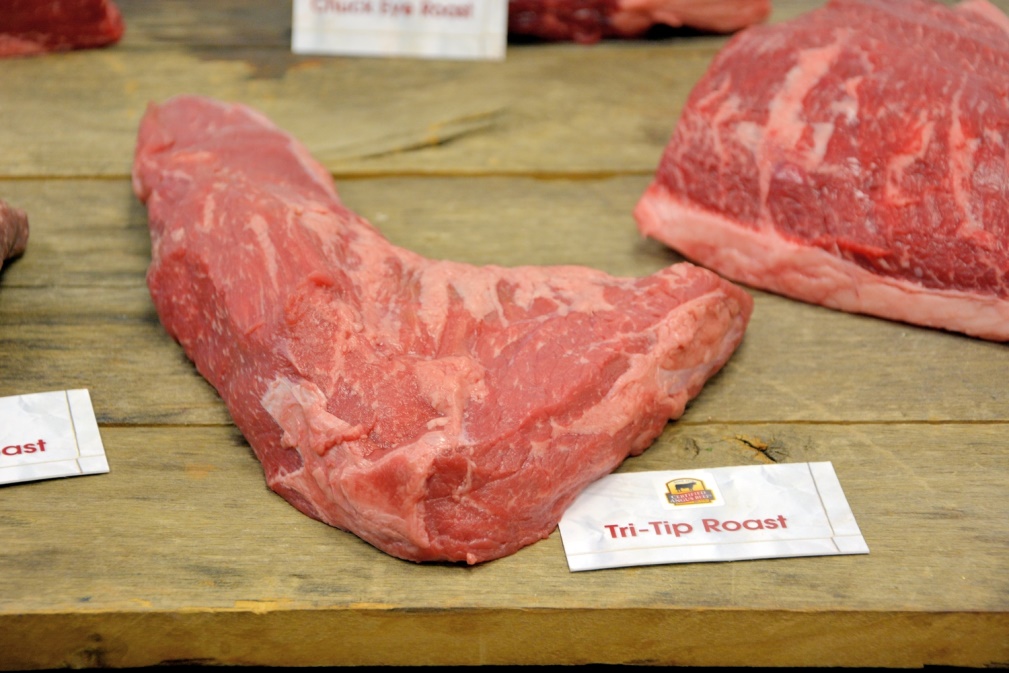
Also known as a round tip roast, tri-tips are usually one of the lowest cost cuts of beef. When cooked properly, they are also one of the most delicious cuts of beef. Tri-tips make very tender roasts that are great for barbecuing, especially when marinated before cooking. They also adapt well to the bold flavors of dry rubs.
A trick to keeping this very lean cut of meat moist is to not trim any fat whatsoever until after cooking. What little fat there is, needs to stay on to tenderize (and flavor) the meat as it cooks. Roasted tri-tips and barbecued tips make absolute best leftover roast beef sandwiches.
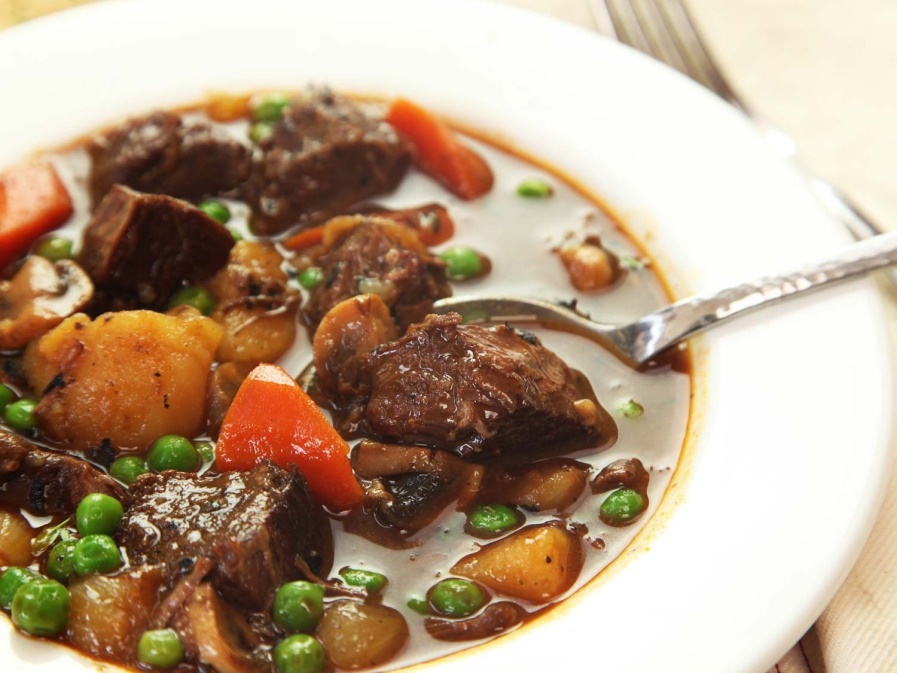
When a steak is cut from this roast it is called a tri-tip steak. Whole round tips or tri-tips are traditionally roasted, braised, or marinated and grilled. Round tip ends are perfect for stews, by the way.
Round or tri-tips sold in bulk can vary greatly in size. The ones our cookbook authors, Jan and Bob, like best are about 2 to 3 pounds, and can usually be purchased at a savings of around 40% when bought whole.
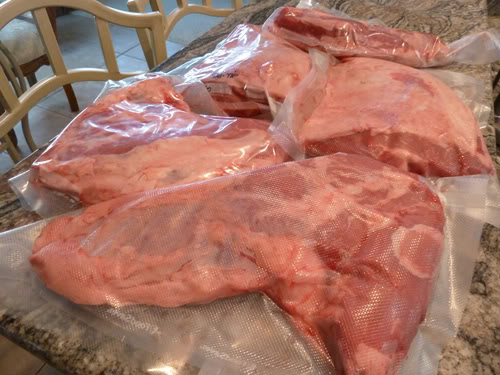
Vacuum sealed tri-tips can usually be kept refrigerated for up to 10 days if purchased with a good ‘sell by’ date, or frozen for up to 1 year. If not vacuum sealed, you should divide and/or prepare it for storage within 2 or 3 days of purchase. Use a large chef’s knife to divide the whole roast when you’re going to use it for steaks and stews.
I’ll close this brief tri-tip tutorial with a recipe from this super cookbook (The Ultimate Bulk Buying Cookbook). Both authors and their fans rave about this as one of the best beef stroganoff recipes they’ve ever tried. The claim is that beef stroganoff doesn’t get any simpler or tastier. The real trick to this recipe’s success is cream cheese—it makes the final dish extra, extra creamy. Let’s see what you think!
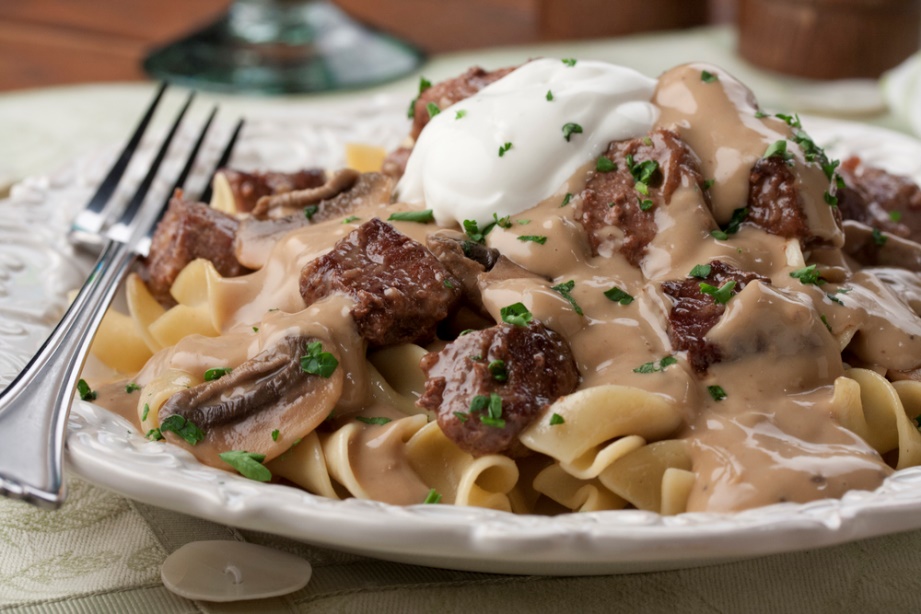
SLOW COOKED BEEF STROGANOFF
2 pounds tri-tip steak, cubed
2 (10.8 ounce) cans cream of mushroom soup
14 to 16 ounces sliced button mushrooms
1 teaspoon ground mustard
2 tablespoons Worcestershire sauce
2/3 cup beef broth OR stock
1 pound cream cheese, cubed
Salt to taste
Pepper to taste
Add cream of mushroom soup, mushrooms, mustard, Worcestershire sauce, and beef broth to a slow cooker set on low.
Stir in steak cubes and cook 8 to 9 hours, or until steak is fork tender.
Add the cream cheese to the slow cooker, and stir until completely melted.
Add salt and pepper before serving (over rice, noodles, potatoes…)
- www.seriouseats.com
- www.savoryexperiments.com
- www.oldlinemeats.com
- www.forum.bradleysmoker.com
- www.mrfood.com
 Alice Osborne
Alice Osborne
Weekly Newsletter Contributor since 2006
Email the author! alice@dvo.com
